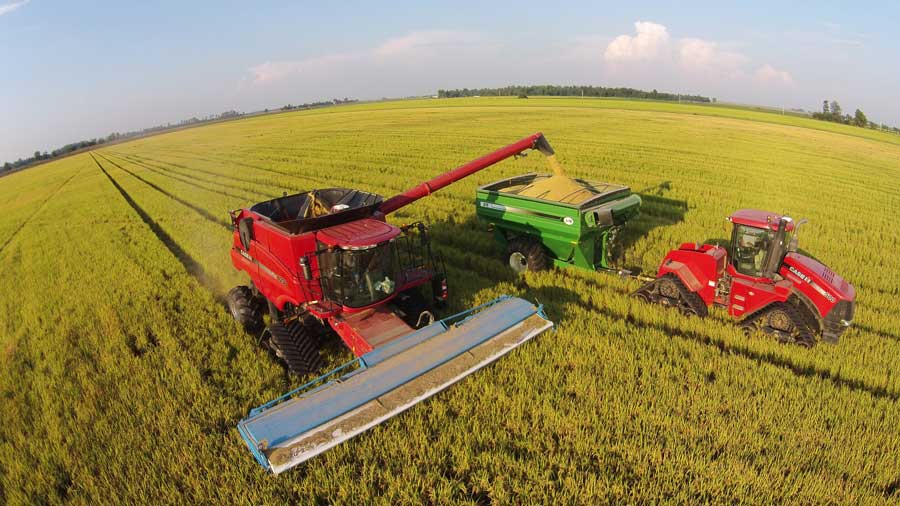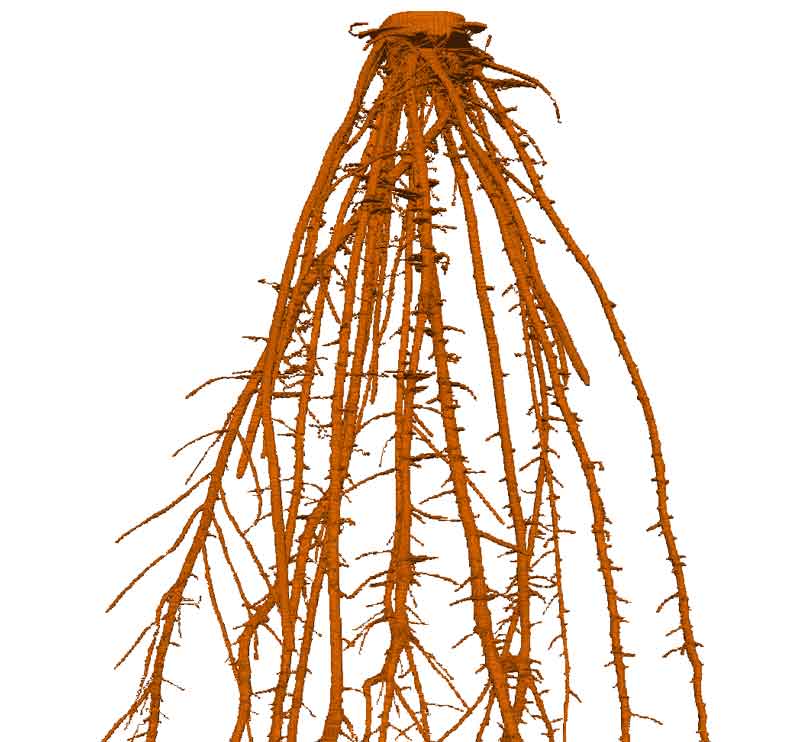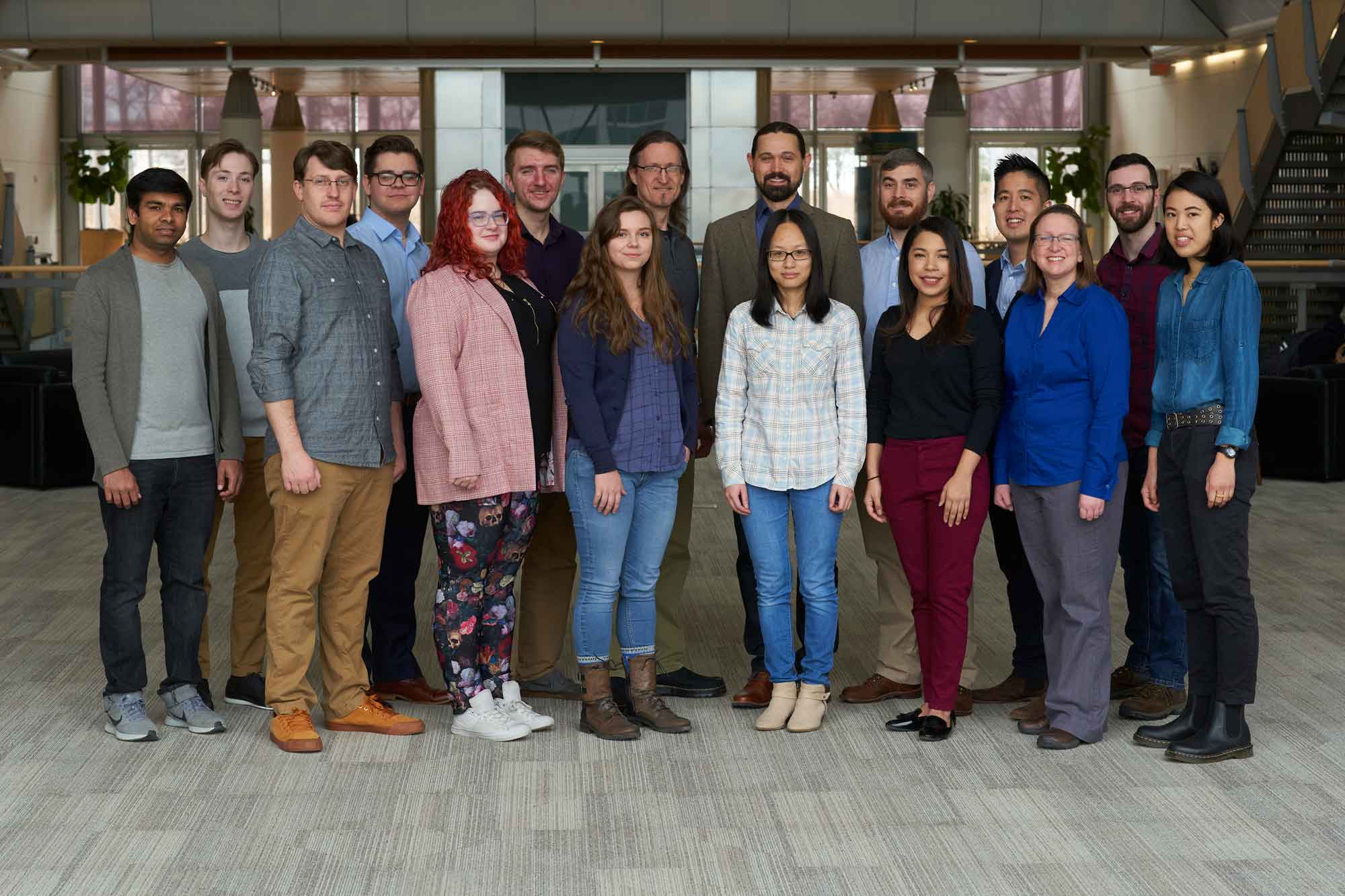Attack of the Feral Weed
Danforth Center Scientists Fight Back Against Rice’s Evolving Enemy
The world depends on rice: it is a staple food for more than half the Earth’s population. Rice has been grown for thousands of years and in more than one hundred countries. And just about everywhere rice is grown, a thieving, cunning, lookalike weed runs amok, damaging harvests. It is known as “weedy rice.”

Rice is grown in more than 100 countries and is a staple for more than 3.5 billion people around the globe. Danforth Center scientists are working to combat a pernicious weed that reduces yields everywhere.
Weedy rice is a plant that belongs to the same genus and species as cultivated rice, but it produces far fewer grains. Herbicides used in rice growing can’t touch it, and due to its striking resemblance to desirable rice, it’s easy for this invader to flourish in fields undetected. Left unchecked, weedy rice steals water and precious nutrients from the rice crop, resulting in a dramatic loss of yield – by up to 80 percent. Estimated annual losses are more than $45 million in the U.S. alone, resulting in higher prices. When weedy rice outcompetes crop rice, farmers and consumers both lose.
But now, with backing from the National Science Foundation, Danforth Center Principal Investigator Chris Topp, PhD, is partnering with Kenneth M. Olsen, PhD, professor of biology at Washington University in St. Louis and others to help learn how weedy rice outcompetes crop rice – and how to defeat it.

This work has the potential to help farmers here in Missouri while also helping to feed millions of people around the globe.
Chris Topp, PhD, Danforth Center principal investigator
The Hidden Half
Weedy rice is essentially domesticated rice that has gone feral, but how exactly does this happen? Researchers are hoping to find out, but one thing they know for certain is that a significant source of its abilities lies below ground, in the roots.
Better understanding the “hidden half” of plants — the 50 percent below ground — is a major focus of the Topp lab. They have pioneered the use of X-ray 3D computerized tomography (CT) for nondestructive observation of root growth and development over time. The facility is unique in North America, and already the work is yielding results.

3D reconstruction of a rice root system created using nondestructive X-ray CT technology.
Using this unique imaging to observe undamaged roots of growing weedy rice, they discovered a major aspect of its success: weedy rice had evolved “cheater traits” that allow it to take advantage of the soil to beat out rice crops for nutrients. The team is now expanding on this discovery.
“By understanding how this invader competes for nutrients underground, we can learn how to better fight against it, save countless rice crops, and, as a result, improve farmers’ bottom lines and contribute to feeding millions of people,” said Topp.
Potential for Greatness
The research has significant application beyond just identifying the best methods to combat a pest. Several traits that weedy rice currently possesses could prove useful for improving the real rice crop someday. Besides the cheater traits, weedy rice is also resistant to the common fungal disease rice blast. Understanding the genetic basis for these traits could eventually help breed stronger, more productive crop rice varieties.

The Topp lab. Principal Investigator Chris Topp, PhD, is working with fellow scientists to combat weedy rice.
The Need
This research is funded by the National Science and donors to the Innovation Fund. Interested in supporting projects like this? Visit danforthcenter.org/give.
About
A version of this story originally appeared in the Leaflet, the free newsletter of the Donald Danforth Plant Science Center. Sign up to receive more stories like this straight to your inbox.